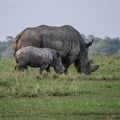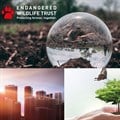In Africa, the wildlife conservation industry has dealt with many a challenge, many of which have been contained to parts of the continent. With Covid-19, however, we have experienced unprecedented challenges the world over.
Regarding wildlife conservation, we have experienced revenue streams and resources, worth years of ongoing research, development and contribution, dry up in a matter of weeks. The very existence of some of our most prominent conservation agencies and protected areas are at risk of closing their doors, and with them our ability to protect the myriad of species, as well as the areas they inhabit. How do we protect conservation and wildlife resources when we battle to protect our own existence?
Like all the other industries, we are compelled to explore alternative options as we fight for not only the survival of our industry, but also the work ploughed into preserving our wildlife and ecosystems whilst sustaining efforts for our communities. Innovative and unique alternatives need to be developed to ensure the many endangered species, which we have fought so hard to conserve, do not become extinct during this global pandemic.
Primary role of wildlife economy in rural communities
According to an article published by the United Development Programme, the travel and tourism sector accounted for 10.3% of global GDP and created one in four new jobs in 2019. Wildlife tourism supported 21.8 million jobs across the world, or 6.8% of total travel and tourism jobs. In Africa, where wildlife tourism is a drawcard to the sector, the percentage was much higher, at 36.3%. The wildlife economy is, therefore, key not only to the conservation of wildlife and their habitats, but to the people living in the vast communities adjacent to conservation areas.
Many of the people employed in this sector live in rural areas where they only have the wildlife economy to depend on for their livelihoods. The shutting of borders, grounding of flights and restriction on movement has left the tourism sector hard hit and people without incomes. Many national parks in Africa, as well as the many private reserves have closed their doors to both local and international tourists. Without the funding received from guests, the operations of these properties are seriously compromised.
The fear is that there does not appear to be a “light at the end of the tunnel” at this stage. The restrictions on travel, especially across provincial borders and internationally, may continue for months, and even when the restrictions are ultimately lifted, the tourism sector will need to deal with the impacts of perceptions while it endeavours to once again entice the return of visitors to the country.
The tourism industry battled in South Africa due to the Ebola outbreak in the Democratic Republic of Congo during the 2014–2016 epidemic, thus the will to resume travelling may further be compromised due to travellers fearing leaving the safety of their homes. This all has unimaginable impacts on the conservation of these wild areas. Important conservation meetings and conferences tackling the usual threats to conservation are also either being postponed or cancelled, which in turn has an indirect impact on how we manage our wildlife.
Decrease in financial and surveillance resources
With the global lockdown halting most tourism sector activities, there simply is no cashflow from incoming tourists. The tourism industry, for lack of a better word, is dead. Even donor funding has slowed as businesses and individuals reassess their own cashflows and attempt to support their staff in an environment where funding is not coming in. This leaves many protected areas without an operational budget for anti-poaching surveillance and other activities.
This surveillance extends to communities living close to wildlife by keeping animals from raiding crops, attacking domestic stock, and even killing people. There will potentially be an increase in human-wildlife conflict as reserve staff are unable to attend to problem animals.
Increases in poaching
As a result of job losses, no income and threatened livelihoods, there is the threat of increased poaching and exploitation of the environment. Communities struggling to survive under lockdown have resorted to living off the land. This is expected to get worse as our economic environment declines. As the government and private landowners are further stressed by the pandemic, their willingness and ability to fund anti-poaching units, reserve management and conservation offices will be reduced considerably. This, coupled with the fact that communities are under stress financially, paints a grim picture for poaching, as they potentially turn to subsistence poaching in order to maintain livelihoods.
Poaching for the pot is bad enough for wildlife, however the real risk is felt when poaching occurs for greed through sophisticated and specialised syndicates.
Unfortunately, the reserves are sitting with their hands tied behind their backs, and this wasted time is not set to good effect. Security operations are focusing on "essential training for essential services". Important for anti-poaching operations is to gain a better understanding of the modus operandi of poaching syndicates during the pandemic.
How does the wildlife conservation industry continue?
The big question remains, how do we prepare for the massive task that lies ahead to rebuild our nation and economy, whilst not allowing the demise of our important and lucrative tourism and wildlife conservation industry?
There will be a new ‘normal’ which we will all have to adapt to. At this stage, nobody knows what the new ‘normal’ will be, however, the wildlife industry will have to adapt to survive. We will need to be innovative, not only in how we use resources, but how we use technology. The use of technology in wildlife conservation will become more important than ever before. We will also need to rely on partnerships more now than ever before, in particular partnerships between government, business and the public.
This pandemic is showing us that there is opportunity to reform our industry infrastructure.
At the annual Oppenheimer Research Conference (ORC), still scheduled for later this year, we are going to have robust discussions regarding wildlife conservation and what the long-term consequences could be in a post-pandemic world. It will present an opportunity to table new learnings, and technologies that may assist our efforts. It may require discussions on new funding and operational models. It will certainly create an opportunity to consider how to keep our communities safe whilst maintaining the balance in our biodiversity efforts.




































